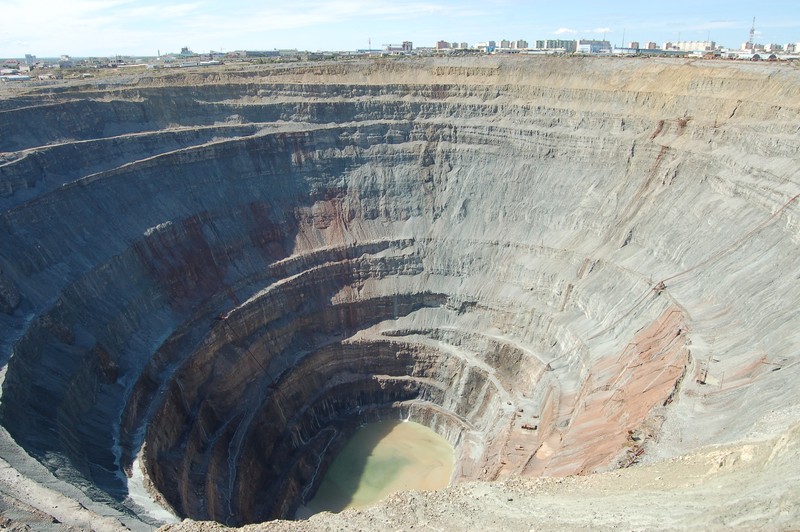
Mirny open pit mine by Jean-Daniel Paris, distributed by EGU under a Creative Commons licence.
This former open-pit diamond mine is currently the second largest excavated hole in the world. After diamond was discovered in there in 1955, the area became the first and largest diamond mine in the Soviet Union, producing up to 2,000 kg of diamond per year during the 1960s. Its surface operations continued until 2001 and the mine was permanently shut in 2011.
This photo was taken on 22 July 2008 by climatologist Jean-Daniel Paris on a trip with the YAK-AEROSIB project (https://yak-aerosib.lsce.ipsl.fr), which sought to measure the trophospheric composition of greenhouse gases and pollutants over Siberia.
“The scientific flight itinerary from Novosibirsk to Yakutsk and back is completed in about five days. Along the way, we overnighted at a handful of towns, including Mirny. We spent a few hours around the town waiting for the refueling and visited this old diamond mine pit. Despite emissions from its scattered industrial and extraction activities, Siberia remains close enough to a pristine continental tropospheric laboratory,” commented Paris.
Diamond is formed when carbon bearing material is exposed to high pressure within the Earth’s lithospheric mantle or at the site of a meteor strike. Annually, approximately 26,000 kg of natural diamond is mined worldwide, a harvest worth almost €7 billion. Roughly half the planet’s mines are located in Central and Southern Africa, but others can be found in Canada, Brazil, Australia, India, and Russia. Another 100,000 kg is also produced synthetically each year and is mainly used for industrial purposes.
Imaggeo is the online open access geosciences image repository of the European Geosciences Union. Every geoscientist who is an amateur photographer (but also other people) can submit their images to this repository. Being open access, it can be used by scientists for their presentations or publications as well as by the press. If you submit your images to imaggeo, you retain full rights of use, since they are licenced and distributed by EGU under a Creative Commons licence.
